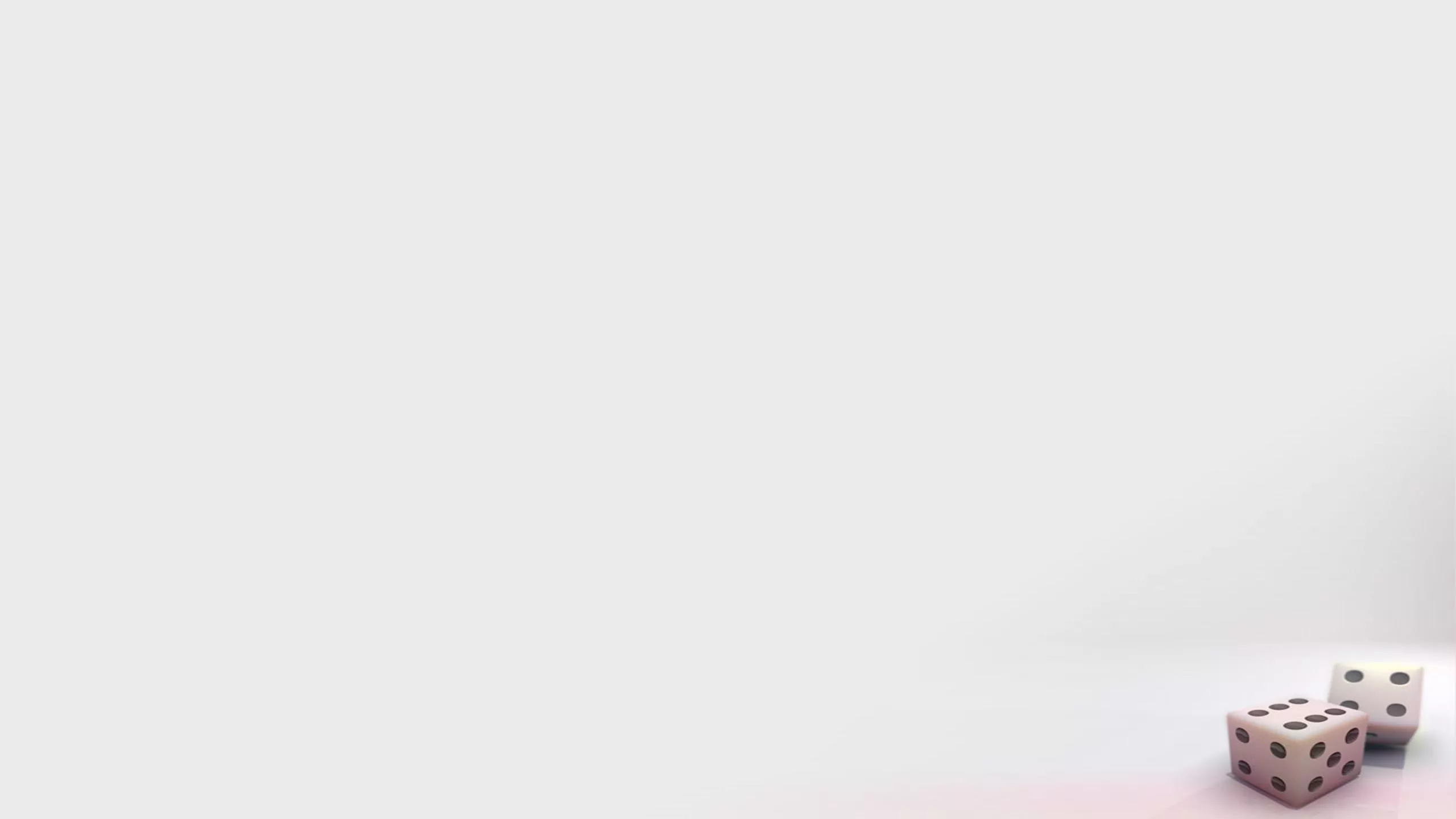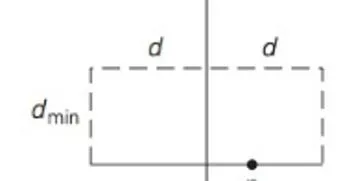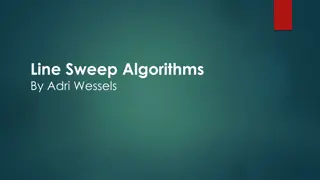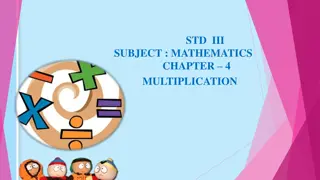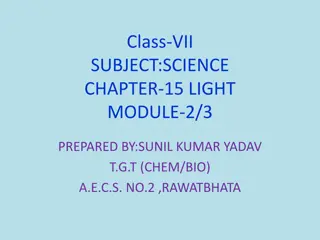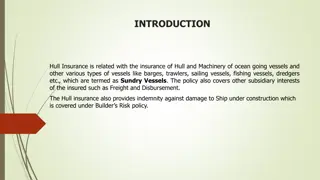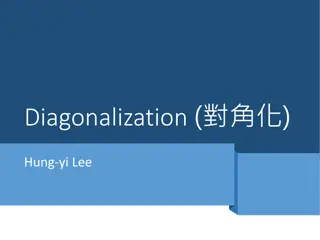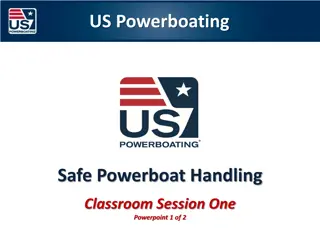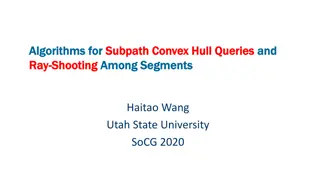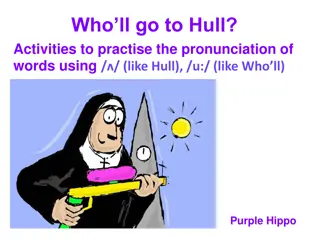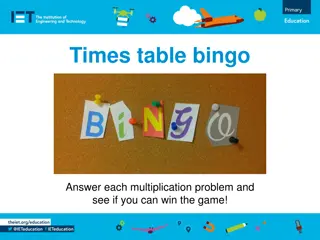Algorithms: Convex Hull, Strassen's Matrix Multiplication, and More
Explore various divide-and-conquer algorithms including Convex Hull, Strassen's Matrix Multiplication, and Quickhull. Understand the concepts of Sorting, Closest Pairs, and Efficiency in algorithm design. Discover efficient techniques such as recursive calculations and simplifications to enhance algorithm performance.
Download Presentation

Please find below an Image/Link to download the presentation.
The content on the website is provided AS IS for your information and personal use only. It may not be sold, licensed, or shared on other websites without obtaining consent from the author. Download presentation by click this link. If you encounter any issues during the download, it is possible that the publisher has removed the file from their server.
E N D
Presentation Transcript
MA/CSSE 473 Day 17 Divide-and-conquer Convex Hull Strassen's Algorithm: Matrix Multiplication (if time, Shell's Sort)
MA/CSSE 473 Day 17 Student Questions Exam 2 specification Levitin 3rd Edition Closest Pairs algorithm Convex Hull (Divide and Conquer) Matrix Multiplication (Strassen) Shell's Sort (a.k.a. shellsort)
Levitin 3rd edition Closest Pair Algorithm Sorting by both X and Y coordinates happens once, before the recursive calls are made. When doing the comparisons in the inner loop, we compare all points that are in "y within d" range, not just those on opposite sides of the median line. Simpler but more distances to calculate than in what I presented on Friday.
A fast algorithm for solving the Convex Hull problem QUICKHULL
Convex Hull Problem Again, sort by x-coordinate, with tie going to larger y- coordinate.
Simplifying the Calculations We can simplify two things at once: Finding the distance of P from line P1P2, and Determining whether P is "to the left" of P1P2 The area of the triangle through P1=(x1,y1), P2=(x2,y2), and P3=(x3,ye) is of the absolute value of the determinant 1 y x y x x y 1 1 = + + 1 x y x y x y x y x y x y 2 2 1 2 3 1 2 3 3 2 2 1 1 3 1 3 3 For a proof of this property, see http://mathforum.org/library/drmath/view/55063.html How do we use this to calculate distance from P to the line? The sign of the determinant is positive if the order of the three points is clockwise, and negative if it is counter- clockwise Clockwise means that P3 is "to the left" of directed line segment P1P2 Speeding up the calculation
Efficiency of quickhull algorithm What arrangements of points give us worst case behavior? Average case is much better. Why?
Strassen's Divide-and-conquer algorithm FASTER MATRIX MULTIPLICATION
Ordinary Matrix Multiplication How many additions and multiplications are needed to compute the product of two 2x2 matrices? [][] [] C00 C01 A00 A01 B00 B01 = * C10 C11 A10 A11 B10 B11
Strassens Matrix Multiplication Strassen observed [1969] that the product of two matrices can be computed as follows: [][] [] [] C00 C01 A00 A01 B00 B01 = * C10 C11 A10 A11 B10 B11 M1 + M4 - M5 + M7 M3 + M5 = M2 + M4 M1 + M3 - M2 + M6 Values of M1, M2, , M7 are on the next slide
Formulas for Strassens Algorithm M1 = (A00 + A11) (B00 + B11) How many additions and multiplications? M2 = (A10 + A11) B00 M3 = A00 (B01 - B11) M4 = A11 (B10 - B00) M5 = (A00 + A01) B11 M6 = (A10 - A00) (B00 + B01) M7 = (A01 - A11) (B10 + B11)
The Recursive Algorithm We multiply square matrices whose size is a power of 2 (if not, pad with zeroes) Break up each matrix into four N/2 x N/2 submatrices. Recursively multiply the parts. How many additions and multiplications? If we do "normal matrix multiplication" recursively using divide and conquer? If we use Strassen's formulas?
Analysis of Strassens Algorithm If N is not a power of 2, matrices can be padded with zeros. Number of multiplications: M(N) = 7M(N/2) + C, M(1) = 1 Solution: M(N) = (Nlog 27) N2.807 vs. N3 of brute-force algorithm. What if we also count the additions? Algorithms with better asymptotic efficiency are known but they are even more complex.
This is not a divide-and-conquer algorithm. Today just seemed like a time when we might have a few minutes in which to discuss this interesting sorting technique Insertion Sort on Steroids SHELL'S SORT (A.K.A. SHELLSORT)
Insertion sort For what kind of arrays is insertion sort reasonably fast? What is the main speed problem with insertion sort in general? Shell's Sort is an attempt to improve that.
Shell's Sort We use the following gaps: 7, then 3, then 1 (last one must always be 1): Next, do the same thing for the next group of 7ths
Shell's sort 3 Why bother if we are going to do a regular insertion sort at the end anyway? Analysis?
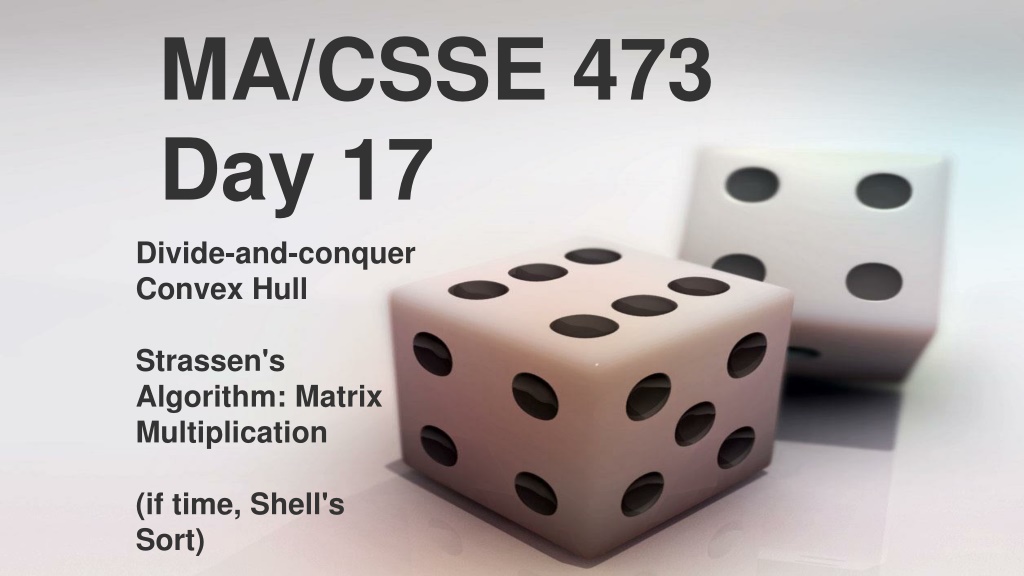
 undefined
undefined

